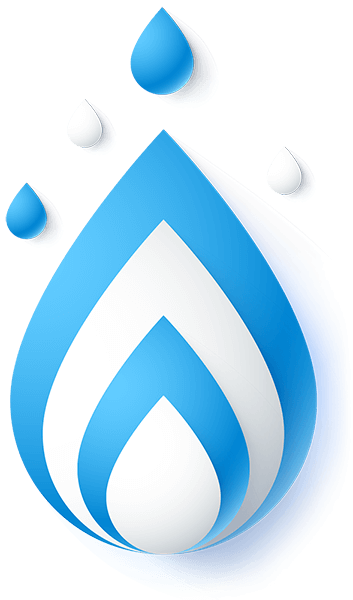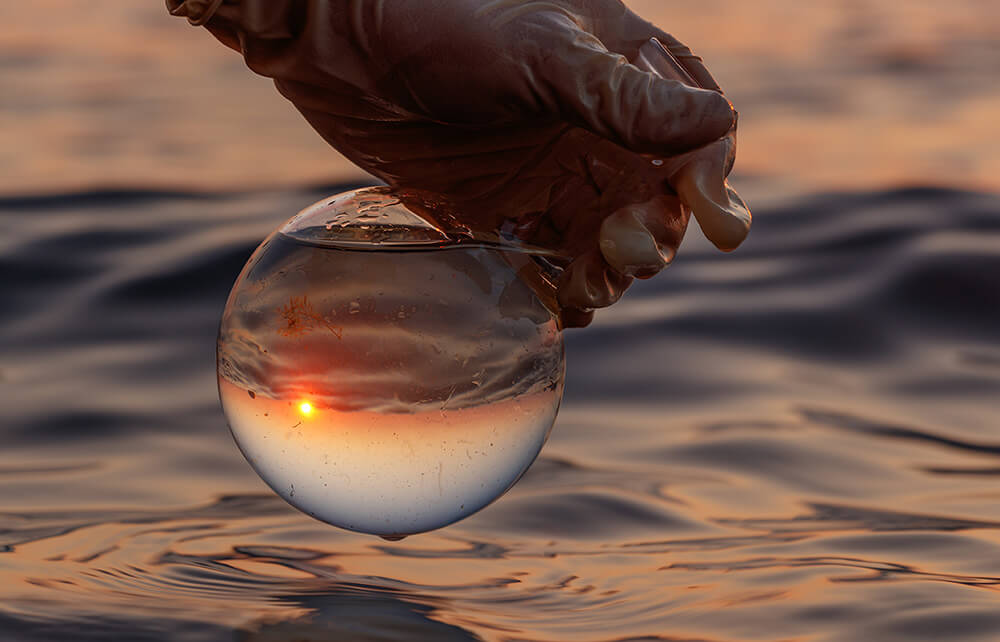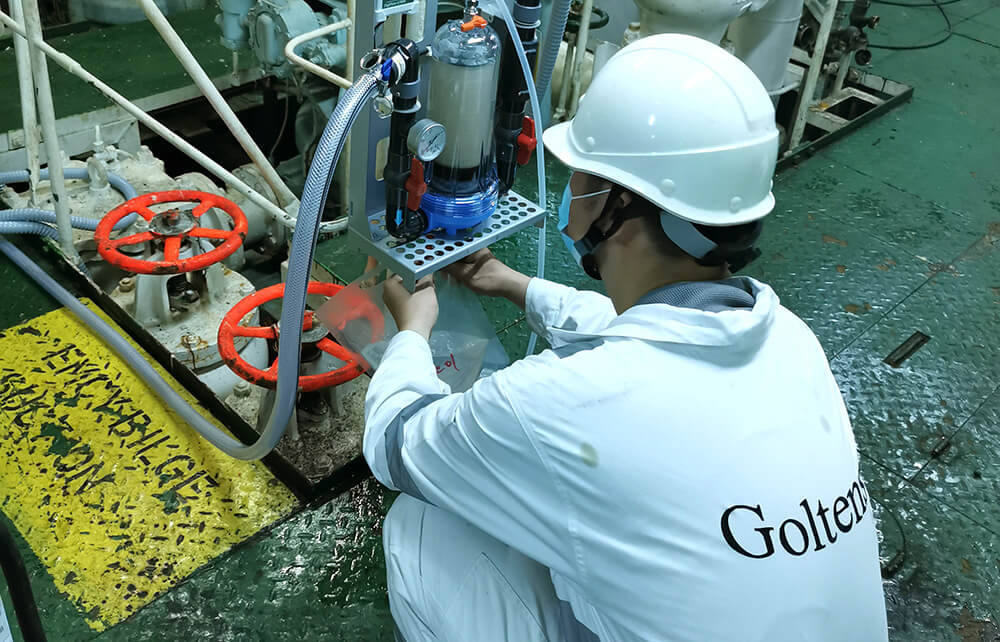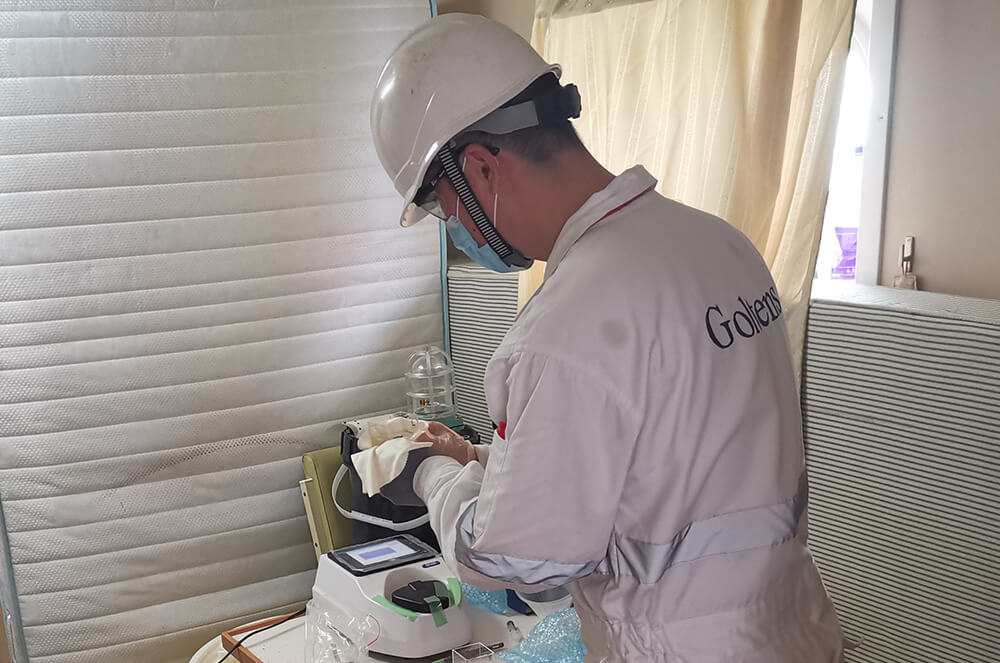Class Approved D-2 BWT Testing
IMO-Compliant Commissioning Testing of Ballast Water Management Systems
Effective from 1 June 2022, Regulation E-1 of the Ballast Water Management Convention will enter into force requiring all vessels fitted with a Ballast Water Management System (BWMS) to complete commissioning testing to demonstrate compliance with the IMO D-2 Discharge standard.
To support shipowners globally, Goltens stations offer Class-approved, onboard indicative testing and reporting at major ports around the world completed in compliance with BWM.2/ Circ.70/Rev.1, ‘Guidance for the commissioning testing of ballast water management systems’.

Objective of BWMS Commissioning Testing
Commissioning testing is required to demonstrate that the particular type-approved BWMS installed onboard the vessel is performing as designed by demonstrating that its mechanical, physical, chemical and biological processes are working properly.
Note that commissioning testing is not performed to validate the system design. The respective BWMS designs should have been validated during the respective type-approval process and will already have been demonstrated to comply with the IMO D-2 discharge standards.
Qualified Testing Providers
The required testing must be performed independently to the satisfaction of vessel’s Flag State administration. The testing is not within the scope of standard supplier commissioning, however the BWMS supplier can support the process by arranging or facilitating third-party independent testing. With years of BWMS retrofit experience and hundreds of installations completed, shipowners can confidently engage Goltens’ highly experienced engineers to conduct this testing.
BWMS Testing Process
The guidance shown below dictates that system testing should be conducted using local ambient water regardless of the challenges this water may present, and regardless of it being within or outside the original system design limitations.
IMO-Compliant Commissioning Testing of BWMS Step by Step
Step 1: Ambient Water Sample Testing (Optional)
During ballast water uptake, a sample of ambient water can be taken from the port or even directly from the harbor where the vessel is located. Detailed analysis of the sample is not required, but an indicative analysis may be performed if desired.

Step 2: Ballast Water Discharge Sampling
A sample is taken during Ballast Water discharge from the system’s sampling point, following full treatment of the Ballast Water. The sample should be collected as close to the discharge point as practical and be representative of the tank or tanks being emptied.

Step 3: Indicative Onboard Analysis
Once the sample has been taken, an indicative onboard test needs to be conducted to demonstrate that the IMO D-2 standard is met. This defines the maximum amount of viable organisms allowed to be discharged as well as a measure of specified indicator microbes harmful to human health

Step 4: Lab Testing (as required)
If the indicative sampling conducted onboard is inconclusive, Goltens has partnered with trusted, certified laboratories and can arrange a detailed analysis to confirm compliance. Vessel General Permit (VGP) testing as required by the US EPA can also be conducted by our partner labs.

Final Step: Reporting
Once completed, the results of the testing, inclusive of the method used and the test results, need to be filed with the Flag State or class as required by the Flag State
Green Technologies Videos
Let Goltens Solve Your Challenge
Goltens is the right partner for ship owners and power plant operators all over the world. Response to all service enquiries typically falls within 12 hours.
Find Your Region’s Contact
Select a region below and find the right Goltens expert
